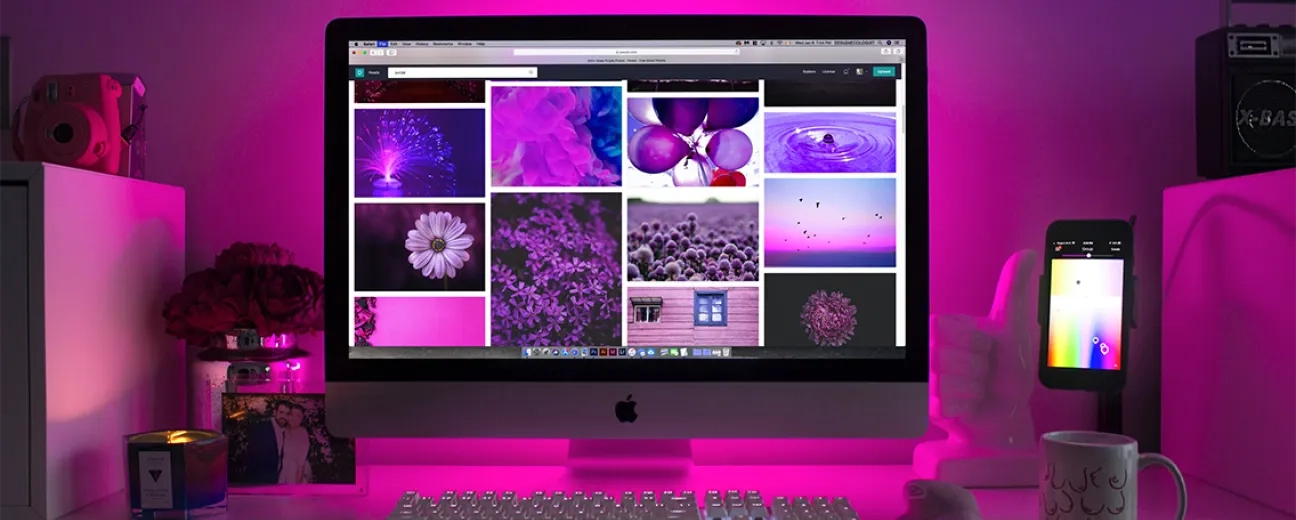Designing Visually Immersive Websites with Color Harmony

First impressions happen in milliseconds - and color is the first thing your users notice.
In a digital world saturated with content, color harmony isn't just about making things look pretty. It's about guiding attention, evoking emotion, and creating immersive experiences that users remember. Whether you're launching a new brand or redesigning a legacy platform, mastering color harmony in web design can be the difference between bounce and engagement.
Why Color Harmony Matters More Than Ever
Color is a silent communicator. It influences perception, behavior, and trust—often before a single word is read. In immersive website design, color harmony ensures that every visual element feels intentional and cohesive, drawing users deeper into the experience rather than distracting them.
According to Smashing Magazine, color harmony plays a critical role in shaping brand identity and user engagement. When colors clash or feel disjointed, users subconsciously perceive the site as unprofessional or chaotic. But when hues work together seamlessly, they create a sense of balance and trust.
Think of your website as a symphony - color is the conductor that sets the tone and rhythm.
The Psychology Behind Color in Web Design
Colors trigger emotional and psychological responses. Blue evokes trust, red signals urgency, green suggests growth. But context matters. A vibrant red might energize a fitness brand but overwhelm a meditation app. Understanding how your audience interprets color is essential to designing immersive experiences.
Toptal emphasizes that color psychology must align with your brand’s message. For example, tech companies often lean into blues and greys to convey stability and innovation, while lifestyle brands may use warmer palettes to evoke comfort and creativity.
- Blue: Trust, security, calm
- Red: Passion, urgency, excitement
- Green: Growth, health, tranquility
- Yellow: Optimism, energy, caution
- Purple: Luxury, creativity, mystery
Ask yourself: What emotion do you want users to feel the moment they land on your site?
Principles of Color Harmony: From Theory to Application
Color harmony is rooted in color theory - how hues relate and interact. Designers often use color wheels to create harmonious palettes through complementary, analogous, or triadic schemes. But theory alone isn’t enough. Application is where the magic happens.
Creative Bloq outlines several foundational principles:
- Contrast: Ensures readability and visual hierarchy.
- Cohesion: Maintains consistency across elements.
- Context: Adapts color choices to audience and brand.
- Accessibility: Considers color blindness and legibility.
For example, a fintech platform might use a deep navy background with white and teal accents to convey trust and clarity. Meanwhile, a travel blog may opt for sun-washed oranges and ocean blues to evoke adventure and warmth.
Color harmony isn’t about picking your favorite shades - it’s about aligning color with purpose.
Real-World Examples: Immersive Design in Action
Let’s look at how brands use color harmony to create immersive digital experiences:
- Spotify: Uses bold, contrasting colors to reflect energy and creativity, while maintaining a consistent black base for cohesion.
- Airbnb: Leverages soft, warm tones to evoke trust, comfort, and belonging - core to its brand promise.
- Stripe: Combines gradients and deep blues to convey innovation and reliability in the fintech space.
At SoftXPro, we’ve helped clients across industries craft immersive websites by anchoring design decisions in color harmony. From e-commerce platforms to SaaS dashboards, our approach ensures that every hue supports the user journey and brand narrative.
Want to see how color harmony can elevate your digital presence?Explore our portfolio of immersive web experiences.
Tools and Techniques for Crafting Harmonious Color Schemes
Designers today have a wealth of tools to build and test color palettes. From Adobe Color to Coolors, these platforms help visualize harmony and contrast in real time. But tools are only as good as the strategy behind them.
WebFX recommends starting with a base color that reflects your brand’s core emotion, then building out a palette using the 60-30-10 rule: 60% dominant color, 30% secondary, 10% accent. This creates visual balance and guides the user’s eye.
Additionally, always test your palette for accessibility. Tools like Stark or WebAIM’s contrast checker ensure your design is inclusive and legible for all users.
Color harmony isn’t static - it evolves with your brand, audience, and platform needs.
Bringing It All Together: Strategy Meets Aesthetics
Immersive website design isn’t just about beautiful visuals—it’s about strategic storytelling. Color harmony acts as a silent narrator, guiding users through your content, reinforcing your message, and leaving a lasting impression.
Whether you're launching a new product or refreshing your brand, aligning your color choices with user psychology and design principles is essential. At SoftXPro, we blend creative intuition with data-driven strategy to craft websites that don’t just look good - they feel right.
Ready to transform your website into an immersive experience?Let’s design something unforgettable together.
Color is the first thing users see - and the last thing they forget.
